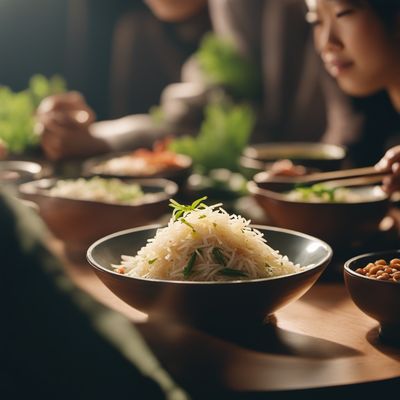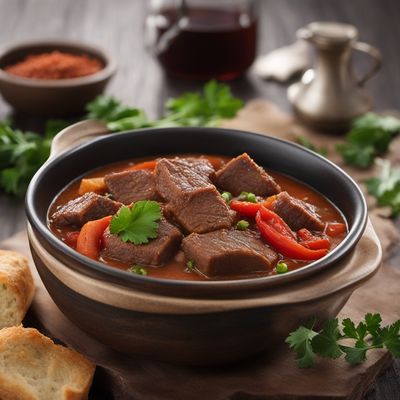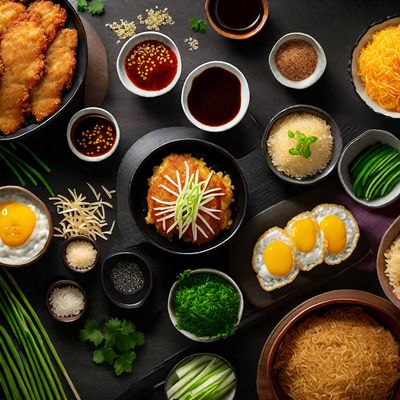
Recipe
Seolleongtang - Korean Beef Bone Soup
Hearty Beef Bone Soup: A Taste of Korea's Rich Culinary Heritage
4.5 out of 5
Seolleongtang is a traditional Korean soup made from slowly simmered beef bones. This comforting dish is known for its milky broth and tender meat, making it a beloved staple in Korean cuisine.
Metadata
Preparation time
20 minutes
Cooking time
4-6 hours
Total time
4-6 hours and 20 minutes
Yields
4 servings
Preparation difficulty
Medium
Suitable for
Gluten-free, Dairy-free, Low-carb, Paleo, Keto
Allergens
Beef
Not suitable for
Vegan, Vegetarian, Pescatarian, Nut-free, Egg-free
Ingredients
-
2.5 pounds (1.1 kg) beef bones 2.5 pounds (1.1 kg) beef bones
-
1 small Korean radish, peeled and cut into large chunks 1 small Korean radish, peeled and cut into large chunks
-
1 onion, quartered 1 onion, quartered
-
4 cloves of garlic, minced 4 cloves of garlic, minced
-
1-inch piece of ginger, sliced 1-inch piece of ginger, sliced
-
10 cups (2.4 liters) water 10 cups (2.4 liters) water
-
1 tablespoon salt (adjust to taste) 1 tablespoon salt (adjust to taste)
-
Thinly sliced beef, for serving Thinly sliced beef, for serving
-
Chopped green onions, for garnish Chopped green onions, for garnish
-
Ground black pepper, for garnish Ground black pepper, for garnish
Nutrition
- Calories (kcal / KJ): 300 kcal / 1255 KJ
- Fat (total, saturated): 15g, 6g
- Carbohydrates (total, sugars): 5g, 2g
- Protein: 35g
- Fiber: 1g
- Salt: 2g
Preparation
-
1.In a large pot, add the beef bones, Korean radish, onion, garlic, ginger, and water.
-
2.Bring the pot to a boil over high heat, then reduce the heat to low and simmer for 4-6 hours, skimming off any impurities that rise to the surface.
-
3.Once the broth has turned milky and the meat is tender, remove the bones and discard.
-
4.Strain the broth to remove any remaining solids.
-
5.Season the broth with salt, adjusting to taste.
-
6.Serve the soup hot with thinly sliced beef, chopped green onions, and a sprinkle of ground black pepper.
Treat your ingredients with care...
- Beef bones — Choose bones with some meat attached, as they will add flavor to the broth.
- Korean radish — Korean radish, also known as mu, adds a subtle sweetness to the soup. If unavailable, daikon radish can be used as a substitute.
Tips & Tricks
- For a richer flavor, roast the beef bones in the oven before simmering them.
- Skimming off impurities during the simmering process will result in a cleaner and clearer broth.
- Serve Seolleongtang with a side of rice and kimchi for a complete and satisfying meal.
- Customize the soup by adding additional toppings such as sliced mushrooms or bean sprouts.
- Leftover Seolleongtang can be refrigerated and enjoyed the next day, as the flavors deepen over time.
Serving advice
Serve Seolleongtang piping hot in individual bowls. Garnish each bowl with thinly sliced beef, chopped green onions, and a sprinkle of ground black pepper. Accompany the soup with a side of rice and kimchi for a traditional Korean meal.
Presentation advice
Present Seolleongtang in a deep bowl, allowing the milky broth and tender meat to take center stage. Garnish with vibrant green onions and a sprinkle of black pepper for visual appeal.
More recipes...
For Seolleongtang
For Korean cuisine » Browse all
More Korean cuisine dishes » Browse all

Kongnamulbap
Bean Sprout Rice
Kongnamulbap is a popular Korean dish that is made with rice and soybean sprouts. It is a flavorful and healthy dish that is perfect for any occasion.

Japchae
Japchae is a Korean dish that is made with sweet potato noodles, vegetables, and meat. It is a popular dish in Korea and is often served in...

Sundubu jjigae
Sundubu jjigae is a Korean stew made with soft tofu, vegetables, and seafood or meat. It is typically served with rice and side dishes.






